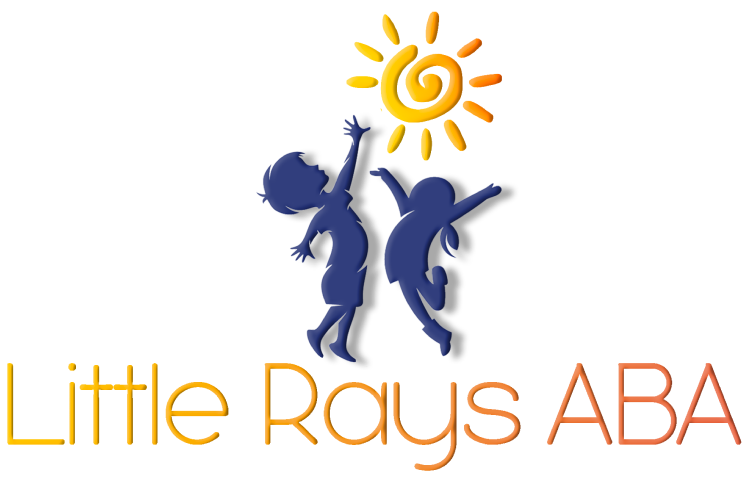Understanding Autism Levels
Autism Spectrum Disorder (ASD) encompasses a range of conditions characterized by challenges with social skills, repetitive behaviors, speech, and nonverbal communication. Autism levels are a way to classify the varying degrees of support required by individuals on the spectrum.
Levels of Autism Spectrum Disorder
The Diagnostic and Statistical Manual of Mental Disorders, Fifth Edition (DSM-5) categorizes autism into three levels based on the severity of symptoms and the amount of support needed.
| Level | Description | Support Needs |
|---|---|---|
| Level 1 | Requiring support | Individuals with Level 1 autism can function independently but may need help with social skills and organization. |
| Level 2 | Requiring substantial support | These individuals show more noticeable symptoms. They need significant support for social interactions and may struggle with change. |
| Level 3 | Requiring very substantial support | Individuals at this level exhibit severe symptoms. They need extensive support for daily activities and communication. |
Differentiating High-Functioning Autism
High-functioning autism (HFA) is an informal term often used to describe individuals who fall on the milder end of the autism spectrum, typically within Level 1 autism. These individuals can exhibit basic life skills such as speaking, reading, writing, and independent living.
High-functioning autism traits often include:
- Milder symptoms compared to those with severe ASD
- Ability to integrate into mainstream classes and workplaces
- Challenges in social interactions and understanding social cues
- Abnormal sensitivity to stimuli such as sounds, lights, and textures.
| Trait | Description |
|---|---|
| Social Skills Challenges | Difficulty understanding and maintaining social relationships |
| Communication Skills | Can speak, read, and write but may struggle with nuanced communication |
| Sensory Sensitivity | Overwhelmed by normal stimuli such as loud noises or bright lights |
| Educational and Employment Integration | Able to join mainstream classes and workplaces but may need accommodations |
Recognizing and understanding the traits of high-functioning autism can help parents and caregivers better support their children and, in turn, help these individuals thrive in various aspects of life.
Treatment Approaches for High-Functioning Autism
Various treatment approaches can be highly effective in improving skills and daily life functions when it comes to managing high-functioning autism traits. Applied Behavior Analysis (ABA) and Occupational Therapy stand out as significant interventions.
Applied Behavior Analysis (ABA)
Applied Behavior Analysis (ABA) is a behavioral approach widely recognized for its effectiveness in treating symptoms of Autism Spectrum Disorder (ASD). ABA focuses on encouraging desired behaviors while discouraging undesired behaviors to enhance various skills. This approach involves tracking and measuring progress, ensuring that the interventions are tailored to the individual's needs.
Two popular ABA teaching styles include Discrete Trial Training (DTT) and Pivotal Response Training (PRT). DTT involves breaking down skills into small, manageable components and providing intensive teaching sessions. PRT, on the other hand, is a more naturalistic approach that aims to increase motivation and responsiveness by focusing on pivotal areas of a child's development.
According to the
CDC, behavioral approaches like ABA have the most evidence supporting their effectiveness for ASD treatment. ABA is widely accepted among educators and healthcare professionals, making it a trusted choice for parents seeking interventions for their children.
| Teaching Style | Description |
|---|---|
| Discrete Trial Training (DTT) | Breaks down skills into small tasks |
| Pivotal Response Training (PRT) | Focuses on motivation and responsiveness |
Little Rays ABA is dedicated to helping children with high-functioning autism reach their full potential through personalized ABA therapy in Florida. Their expert team tailors programs to focus on enhancing social skills, communication, and behavior management, empowering children to thrive in everyday life.
If you're ready to support your child's growth with specialized care, contact Little Rays ABA today and start the journey to unlocking their potential.
Occupational Therapy Benefits
Occupational therapy (OT) is another essential intervention for individuals with high-functioning autism. This therapy aims to teach skills that help individuals live independently. Key activities addressed by occupational therapy include dressing, eating, bathing, and relating to others.
OT can be crucial in enhancing daily life functions, providing individuals with the tools they need to navigate everyday tasks successfully. For many individuals with high-functioning autism, occupational therapy can lead to significant improvements in quality of life.
Individuals undergoing occupational therapy often work on both fine motor skills (such as writing) and gross motor skills (such as coordination). The therapy also focuses on social skills, enabling individuals to interact more effectively with others.
Occupational therapy is instrumental in teaching skills that help individuals with ASD manage daily routines and social interactions.
| Activity | Focus Area |
|---|---|
| Dressing | Fine motor skills |
| Eating | Coordination |
| Bathing | Independence |
| Relating to Others | Social skills |
These autism treatment approaches, ABA and OT, offer comprehensive strategies for addressing high-functioning autism traits, providing individuals with the skills and tools required for better daily functioning and social interaction.
Identifying traits of high-functioning autism is just the first step; providing the right support is crucial for growth. ABA therapy and support services are designed to help children with autism thrive by focusing on their individual needs. Reach out to local providers today to explore how these tailored services can make a positive impact on your child’s development and well-being.
Educational Interventions for High-Functioning Autism
Educational interventions tailored to high-functioning autism play a crucial role in nurturing the development of children on the spectrum. By implementing specific strategies, parents and educators can help these children excel in various aspects of their lives.
Early Start Denver Model (ESDM)
The Early Start Denver Model (ESDM) is designed for young children with Autism Spectrum Disorder (ASD) between the ages of 12 and 48 months. This developmental, play-based approach integrates principles of Applied Behavior Analysis (ABA) to foster improvements in language, social interactions, and learning.
ESDM involves natural settings and everyday activities to create engaging learning experiences. By incorporating play, social exchanges, and shared attention, ESDM aims to enhance the following skills in children:
- Language development
- Social engagement
- Cognitive skills
- Behavioral adaptation
The model emphasizes individualized learning plans, which are crafted based on the child's unique strengths and areas needing development. Regular assessments and progress tracking help adjust intervention strategies to maximize benefits.
TEACCH Approach Overview
The Treatment and Education of Autistic and Related Communication-Handicapped Children (TEACCH) approach focuses on providing structured and visual learning strategies in classroom settings. TEACCH is particularly beneficial for children with high-functioning autism due to its emphasis on consistency and visual aids.
Key components of the TEACCH approach include:
- Structured Teaching: Adapting classroom environments to make them predictable and less overwhelming.
- Visual Supports: Using visual schedules, labels, and instructional materials to enhance understanding and communication.
- Personalized Learning: Tailoring academic and behavioral strategies to each child's individual needs.
- Skill Development: Enhancing both academic and life skills through structured routines and targeted teaching.
The TEACCH approach helps children with high-functioning autism navigate their educational journeys by creating an organized learning environment that mitigates anxiety and promotes independence.
| Intervention | Age Group | Key Components | Benefits |
|---|---|---|---|
| Early Start Denver Model (ESDM) | 12-48 months | Play-Based, ABA Principles, Natural Settings | Language, Social, Cognitive, Behavioral Skills |
| TEACCH | All Ages | Structured Teaching, Visual Supports, Personalized Learning | Academic, Life Skills, Reduced Anxiety, Independence |
Both ESDM and TEACCH provide promising educational interventions for children with high-functioning autism, helping them reach their full potential in various developmental domains.
Psychological Support for Individuals with High-Functioning Autism
Psychological support is crucial for individuals with high-functioning autism to navigate the unique challenges they face. Understanding and implementing effective psychological strategies can greatly enhance their quality of life.
Cognitive-behavior therapy (CBT)
Cognitive-behavior therapy (CBT) is a widely recognized approach for treating various mental health issues. It can be particularly effective for individuals with high-functioning autism who often struggle with anxiety, depression, and other emotional health concerns. CBT targets the connections between thoughts, feelings, and behaviors, helping individuals modify negative thoughts and reactions to situations.
In CBT, individuals work collaboratively with a therapist to set goals and develop personalized strategies. The therapy aims to provide tools for managing stressors and improving emotional regulation. This structured approach allows individuals to gain better control over their emotional responses and develop healthier coping mechanisms.
Coping with Anxiety and Depression
Anxiety and depression are common co-occurring conditions in individuals with high-functioning autism. These conditions can stem from their challenges in social interactions, communication, and adapting to changes. Addressing these mental health concerns is essential for their overall well-being.
- Identification of Triggers: Understanding what triggers anxiety and depression is the first step in managing these conditions. Triggers may include social situations, sensory overload, and changes in routine.
- Developing Coping Strategies: Developing effective coping strategies is crucial once triggers are identified. Techniques such as mindfulness, relaxation exercises, and structured routines can help mitigate anxiety and depression.
- Support Networks: Having a strong support network of family, friends, and professionals can make a significant difference. Support groups and therapy sessions provide a safe space for individuals to share experiences and gain emotional support.
| Condition | Common Triggers | Coping Strategies |
|---|---|---|
| Anxiety | Social situations, sensory overload, changes in routine | Mindfulness, relaxation exercises, structured routines |
| Depression | Isolation, social rejection, bullying | Therapy, support groups, engaging in enjoyable activities |
Addressing anxiety and depression through a combination of CBT and personalized coping strategies can greatly enhance the quality of life for individuals with high-functioning autism. Parents and caregivers must be proactive in seeking appropriate psychological support to ensure their children thrive despite their challenges.
Diagnosis and Challenges of High-Functioning Autism
Understanding and diagnosing high-functioning autism (HFA) presents unique challenges, particularly when it comes to identifying traits in adults and late childhood. This section delves into the complexities of the diagnosis process for these age groups.
Adult Diagnosis Process
The diagnosis of high-functioning autism in adults can often be a difficult and lengthy journey. Many adults with autism face delays in receiving a formal diagnosis due to their ability to mask traits effectively. Self-diagnosis is becoming more accepted within the autism community, especially for individuals facing barriers such as cost and limited access to healthcare.
The process typically involves:
- Initial Screening by Self or Family: Adults may recognize autism traits within themselves based on symptom checklists and comparisons to their experiences.
- Consultation with Healthcare Professionals: A thorough review of the individual's developmental history, current functioning, and family reports.
- Standardized Diagnostic Tools: Instruments like the Autism Diagnostic Observation Schedule (ADOS) or Autism Diagnostic Interview-Revised (ADI-R).
Challenges faced during adult diagnosis:
- High Masking Ability: Many adults with autism have developed sophisticated methods to mask or compensate for their traits.
- Limited Early Records: A lack of early developmental records can complicate the diagnostic process.
- Stigma and Misunderstanding: Societal attitudes and misconceptions about autism in adults can lead to delays in seeking a diagnosis.
Late Childhood Diagnosis
Most cases of high-functioning autism (HFA) are diagnosed later in childhood, usually between ages 7 and 9, in contrast to other forms of autism spectrum disorder (ASD) which are often identified around age 3. The later diagnosis can be attributed to the relatively lower support needs of children with HFA, coupled with their ability to blend in socially to some extent.
The diagnostic process for late childhood typically includes:
- Behavioral and Developmental Observation: Teachers and parents often notice social and behavioral differences in school-aged children.
- Professional Evaluation: A multidisciplinary team, including psychologists, speech therapists, and occupational therapists, conducts evaluations.
- Use of Diagnostic Criteria: Tools like ADOS and ADI-R are employed to assess and confirm the diagnosis.
Challenges associated with late childhood diagnosis:
- Educational Impact: Delayed diagnosis can affect academic and social development, as children might not receive appropriate support early on.
- Emotional and Psychological Strain: Children may experience confusion and frustration due to unidentified challenges.
- Increased Misdiagnosis: Symptoms of HFA can be misinterpreted as other conditions, such as ADHD or anxiety disorders.
| Age Group | Common Diagnostic Tools | Common Challenges |
|---|---|---|
| Adults | ADOS, ADI-R, developmental history | Masking traits, lack of early records, stigma |
| Late Childhood (7-9) | ADOS, behavioral observation, ADI-R | Educational impact, emotional strain, misdiagnosis |
Understanding these processes and challenges is essential for providing timely and effective support to individuals with high-functioning autism. Identifying high-functioning autism traits at any age can open the door to valuable interventions and support systems, enabling individuals to thrive.
Strengths and Challenges of High-Functioning Autism
Employment Barriers
Individuals with high-functioning autism (HFA) often exhibit talents and strengths that can be highly valuable in the workforce. However, they face significant barriers to employment. One of the most pressing challenges is the high unemployment rate, which stands at around 85% among adults with autism spectrum disorders (ASD).
Key barriers include difficulties with social skills, communication, and managing behaviors. These challenges can impact job interviews and colleague interactions, often leading to missed opportunities and misunderstandings.
Barriers to Employment for Individuals with HFA
| Barrier | Description |
|---|---|
| Social Skills Deficit | Difficulty in understanding social cues and engaging in small talk |
| Communication Challenges | Struggle with verbal and non-verbal communication |
| Behavioral Management | Difficulty in adjusting to changes and managing stress |
| Unstructured Environments | Preference for routine and predictability, which are often lacking in most jobs |
Despite these challenges, individuals with HFA can excel in specific fields, especially those that value technical skills and require less social interaction.
Uniqueness in Career Paths
People with high-functioning autism possess unique traits that, when harnessed, can lead to successful careers. They often have exceptional focus, high attention to detail, and strong problem-solving skills. These strengths make them well-suited for careers in technical fields such as computer programming, engineering, and data analysis.
Additionally, companies that recognize and accommodate the needs of individuals with HFA can benefit from their unique perspectives and talents. Adaptations such as clear instructions, structured environments, and supportive team dynamics can significantly improve their job performance and satisfaction.
Fields and Traits Beneficial for Individuals with HFA
| Career Field | Beneficial Traits |
|---|---|
| Computer Programming | Exceptional focus, attention to detail |
| Engineering | Strong problem-solving skills, systematic thinking |
| Data Analysis | Analytical thinking, pattern recognition |
With the right support and understanding, individuals with high-functioning autism have the potential to thrive in their chosen career paths. Employers can play a crucial role by creating inclusive workplaces that acknowledge and leverage the unique strengths of individuals with HFA.
Sources:
https://www.webmd.com/brain/autism/high-functioning-autism
https://www.cdc.gov/autism/treatment/index.html
https://www.verywellhealth.com/why-high-functioning-autism-is-so-challenging-259951
Unlock Your Child's Potential with Expert ABA Therapy!
At Little Rays ABA, we provide compassionate, evidence-based ABA therapy to help children with autism thrive. Our personalized approach fosters growth in communication, social skills, and independence.
Get In Touch With Us Today to Get Started With ABA Therapy!
Related Posts
MENU
GET IN TOUCH
7117 San Salvador Dr Boca Raton, FL 33433
3200 Collins Ave Miami Beach, FL 33140





